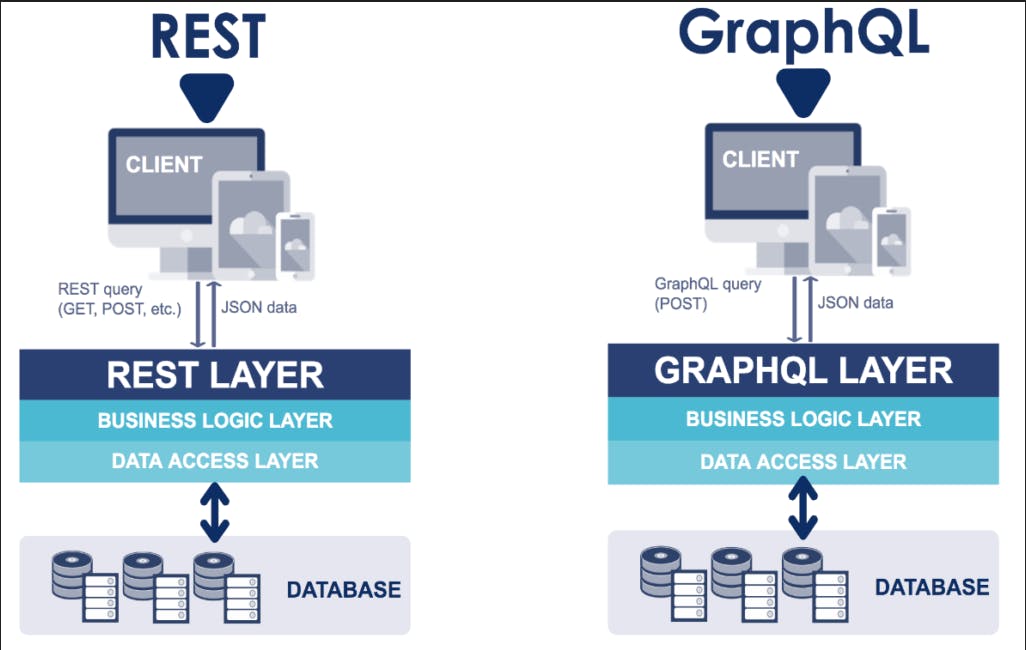REST vs Graph QL: the difference and when to use them
Hello Guys,
Today I am going to share the difference between REST and Graph QL.
So, let's get started and see what the differences are and when they are best used.

What is a REST API ?
REST (Representational State Transfer) is an architectural style that conforms to a set of constraints when developing web services. It was introduced as a successor to SOAP APIs. REST, or RESTful APs, are Web Service APIs that follow the REST standards. Unlike SOAP, a REST API is not constrained to an XML format and can return multiple data formats depending on what is needed. The data formats supported by REST API include JSON, XML, and YAML.
A REST request is made up of the endpoint, HTTP method, Header, and Body.
An endpoint contains a URI (Uniform Resource Identifier) that helps in identifying the resource online.
An HTTP method describes the type of request that is sent to the server. They are:
GET reads a representation of a specified source.
POST creates a new specified source.
PUT updates/replaces every resource in a collection.
PATCH modifies a source.
DELETE deletes a source.
When working with data, a RESTful API uses HTTP methods to perform CRUD (Create, Read, Update and Delete) operations.
What is GraphQL ?
GraphQL is an open-source data query and manipulation language for APIs, and a runtime for fulfilling queries with existing data. Maintained and developed primarily via the GraphQL Foundation, GraphQL has had incredible adoption across a variety of verticals and use cases with organizations like Twitter, Shopify.
Allows the client to specify the exact data returned to Schema definition Language (SDL).
SDL is simply the syntax of writing schemas in GraphQL. When querying in GraphQL, we can access specific data using just one end point.
GraphQL vs. REST APIs
REST API's are :
An architectural style largely viewed as a conventional standard for designing APIs
Deployed over a set of URLs where each of them exposes a single resource
Uses a server-driven architecture
Uses caching automatically
Supports multiple API versions
Response output usually in XML, JSON, and YAML
Simple to use and set up
Client and Server independent
Flexible, and scalable.
GraphQL is :
A query language for solving common problems when integrating APIs
Deployed over HTTP using a single endpoint that provides the full capabilities of the exposed service
Uses a client-driven architecture
Lacks in-built caching mechanism
No API versioning required
Response output in JSON
Tailored to your data requirements
Requires less bandwidth.